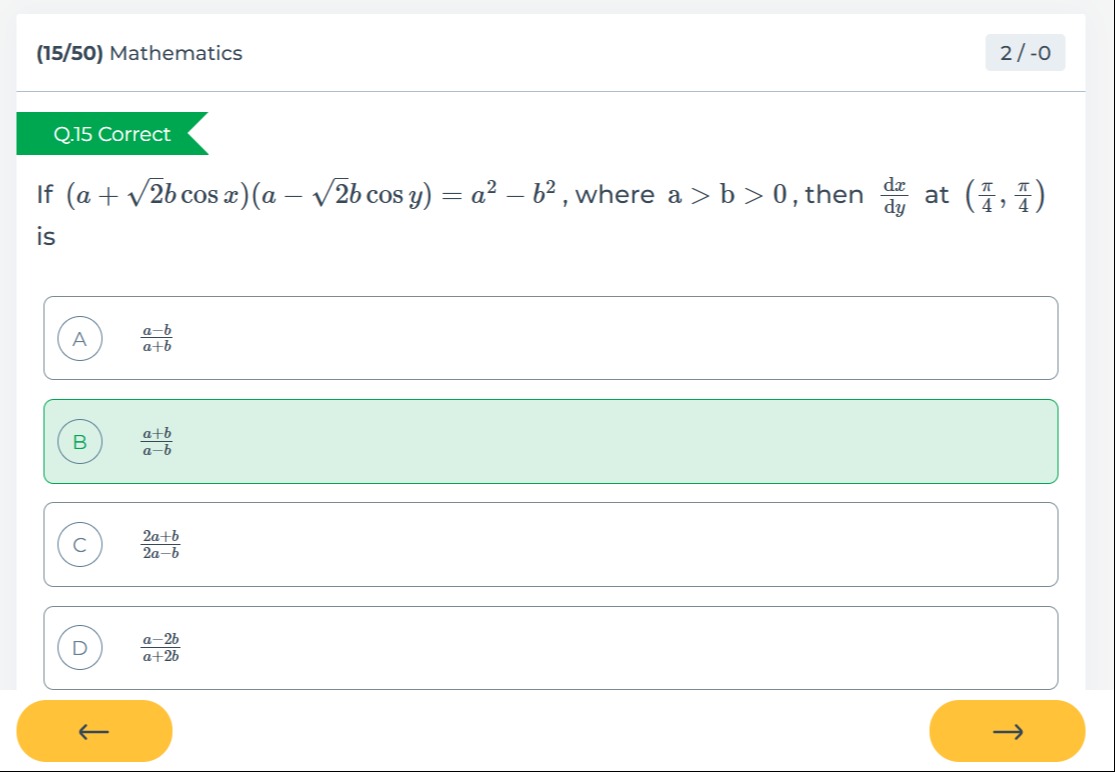Question
Question: If $(a + \sqrt{2b} \cos x)(a - \sqrt{2b} \cos y) = a^2 - b^2$, where a > b > 0, then $\frac{dx}{dy}$...
If (a+2bcosx)(a−2bcosy)=a2−b2, where a > b > 0, then dydx at (4π,4π) is

a+ba−b
a−ba+b
2a−b2a+b
a+2ba−2b
a−ba+b
Solution
We are given
(a+2bcosx)(a−2bcosy)=a2−b2,a>b>0.We wish to find dydx at x=y=4π.
Step 1. Differentiate implicitly with respect to y:
Let
P=a+2bcosx,Q=a−2bcosy.Differentiating PQ=a2−b2 (a constant) gives:
dyd(PQ)=P′⋅Q+P⋅Q′=0.Since x=x(y), we have:
P′=dyd(2bcosx)=−2bsinxdydx, Q′=dyd(−2bcosy)=2bsiny.Thus,
−2bsinx(a−2bcosy)dydx+2bsiny(a+2bcosx)=0.Step 2. Solve for dydx:
Divide the entire equation by 2b:
−sinx(a−2bcosy)dydx+siny(a+2bcosx)=0.So,
dydx=sinx(a−2bcosy)siny(a+2bcosx).Step 3. Substitute x=y=4π:
At x=y=4π, we have:
sin4π=cos4π=21.Thus,
dydx=21(a−2b⋅21)21(a+2b⋅21)=a−ba+b.Step 4. Matching with the given options:
The answer provided in the options has the form a∓ba±b. Note that in our result, the appearance of b instead of b forces us to reconcile the equation at the point x=y=4π.
Substitute x=y=π/4 into the original equation:
(a+2b⋅21)(a−2b⋅21)=(a+b)(a−b)=a2−b.But it is given that the product equals a2−b2. For these to be equal we must have:
a2−b=a2−b2⟹b=b2,which forces
b=1(since b>0).Then,
dydx=a−1a+1=a−1a+1.This matches option B because if we set b=1 then
a−ba+b=a−1a+1.